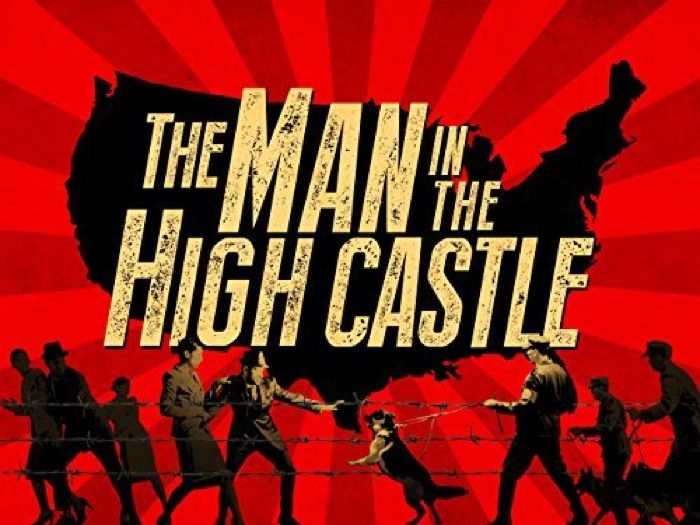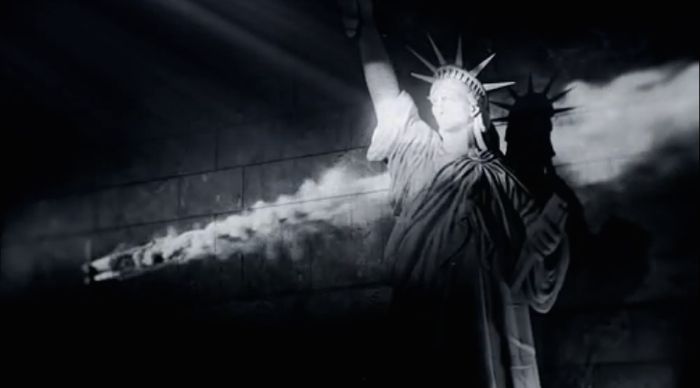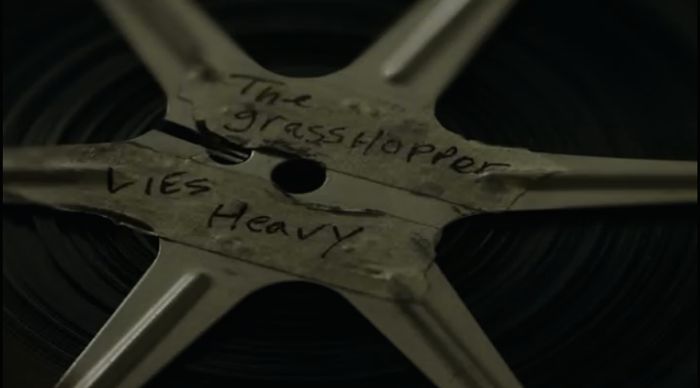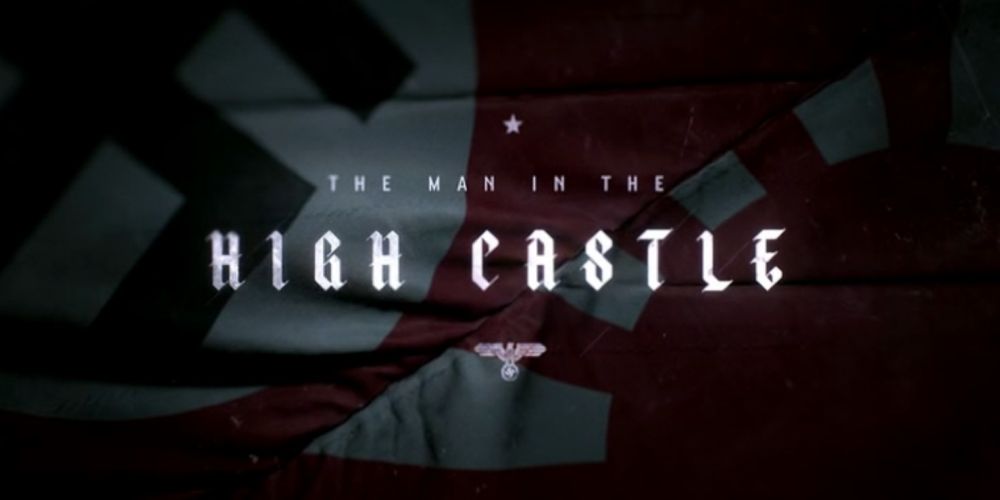The other day as I was casually browsing Amazon, I noticed a banner for The Man in the High Castle, which totally caught me off guard. I remember reading about this a while ago yet was pleasantly surprised (and a little wary) to see that an hour-long The Man in the High Castle pilot was released on January 15th as part of Amazon’s newest pilot season.

Of all the science fiction writers I’ve read over the years, Philip K. Dick is one of my favorites, and his Hugo Award-winning The Man in the High Castle is my second-favorite Philip K. Dick novel (A Scanner Darkly is the first), so I eagerly watched the pilot at my first opportunity.
 The central idea of the book is that, through a series of alternate universe events, the U.S. lost WWII to the Axis powers and has been divided up into two fascist territories: Japan controls the Western states, while the Eastern states are under the control of Nazi Germany. Between the two world superpowers, the Rocky Mountains act as a buffer zone.
The central idea of the book is that, through a series of alternate universe events, the U.S. lost WWII to the Axis powers and has been divided up into two fascist territories: Japan controls the Western states, while the Eastern states are under the control of Nazi Germany. Between the two world superpowers, the Rocky Mountains act as a buffer zone.
And the pilot, for the most part, follows this premise. The show is set in 1962, and, as we soon learn, Americans have been living under this dual fascist state for 15 years.
One thing I liked right away is that the show immerses the viewer into this grim and gritty world of post-war, occupied America immediately after the opening credits (which are gorgeous). There’s no backstory or newsreel-style pre-show to overly explain the setting. Instead, we’re left to put the pieces together ourselves. Which is not to say we never learn how America got to where it is now; history is handed out through little nuggets of dialogue throughout the show.

Shot in flat, neutral colors that really evoke a sense of bleak oppression, it’s also a good-looking show (with the exception of some dodgy CGI here and there), and the set design really helps to reinforce the show’s grim tone.
Additionally, attention to small details, like rising suns and swastikas appearing emblazoned on U.S. buildings, landmarks, and brands, along with some subtle background effects of foreign occupation—like a bus terminal bearing the name Teikoku Station and San Francisco’s airport carrying the name Hirohito Airport—give us a sense of what it might be like to live in this post-war America with a twist.
Like the book, the pilot features numerous characters moving though a many-layered plot, and in this first hour we meet enough characters and enough plot threads are developed to keep the series interesting for a few seasons at the very least.
In New York City, part of the Greater Nazi Reich, we meet would-be resistance fighter and reluctant truck driver Joe Blake, played by Luke Kleintank (Pretty Little Liars), along with SS Obergruppenfuhrer John Smith, a particularly effective, and downright nasty Nazi officer, played by Rufus Sewell (Dark City, Abraham Lincoln: Vampire Hunter).
Meanwhile, in San Francisco, part of the Japan Pacific States, we meet Juliana Crain, a student of aikido recovering from a bad accident, played by Alexa Davalos (The Chronicles of Riddick, Clash of the Titans), and Frank Frink, Julia’s love interest who works in an factory making fake American antiques, played by Rupert Evans (Hellboy). San Francisco is also home to Japanese Trade Minister Nobusuke Tagomi, played by Cary-Hiroyuki Tagawa (Mortal Kombat, Heroes), who gets some of the best lines.
As the story unfolds and the plot threads are pulled taut, we’re introduced to Nazi spies, family strife, resistance fighters, double agents, double-crosses, the notion of superior Nazi technology, and growing tensions between Imperial Japan and Nazi Germany. And over all that looms The Man in the High Castle.
Warning: from this point on, you may encounter spoilers!
Seriously, if you never read or don’t remember the story in Dick’s The Man in the High Castle and want to remain unspoiled, go watch the pilot before reading any further.

Spoiler alert last warning. Proceed from here at your peril.
In the book, the titular man in the high castle is a fellow by the name Hawthorne Abendson, who is the author of the notorious anti-fascist novel The Grasshopper Lies Heavy, which is itself an alternate history novel where the Nazis and the Japanese lost WWII and The United Kingdom emerged as the sole dominant world power. The book’s existence acts as a catalyst for the resistance against the Axis occupation, and it’s been banned by the Germans.
In the pilot, The Grasshopper Lies Heavy is also a major plot device, and one that drives the resistance, but this time it takes the form of a 16mm anti-fascist newsreel showing an Allied victory in WWII, complete with scenes from VE and VJ days as our history knows them.

I like the change for synergy—a book within a book becoming a film within a film—but it’s a choice that changes Dick’s message somewhat. The novel version of Grasshopper is one man’s idea (though a powerful one) of a future that could have been, while the film version of the show uses real imagery, and therefore hints at a very tangible alternate history (unless 1962 film editing is massively superior to what was available in our world at the time). In any case, I found it to be an interesting choice, somewhat akin to removing the allegorical Tales of the Black Freighter comic strip from the Watchmen film, but I’m curious to see how this difference will play out as the plot progresses.
Another element that plays a huge role in Dick’s book is the use of the I Ching (the Chinese Book of Changes). Three of the main characters in the novel regularly use the I Ching to make major life choices, and Dick himself even reportedly used the I Ching to make certain plot decisions in the book. In the pilot, only one character, trade minister Tagomi, uses the I Ching so far, but I was really happy to see this included.
One last touch I really enjoyed was how the show handled music. If the Nazis and Imperial Japan had taken over the world in 1947, it’s highly unlikely that rock and roll would have been born—or at least popularized—and the music in The Man in the High Castle is spot on in this regard. The show opens with a rendition of “Edelweiss,” and much of the music throughout is reminiscent of late 1940s-era schmaltzy pop—think the Andrews Sisters and Bing Crosby.
The pilot has some good television pedigree behind its production as well. It was written by Frank Spotnick (of X-Files fame) and directed by David Semel (notable for his work on Heroes), and they produced it together along with Ridley Scott (so be sure to keep on the lookout for origami unicorns).
And so far The Man in the High Castle seems to be one of the more popular titles in this round of Amazon pilots, which bodes well. If the whole season was available today, I would binge-watch the heck out of it. So if you like Philip K. Dick, dystopian futures, alternate histories, or just solid dramas, give The Man in the High Castle a chance. Then, if you like it, vote for it in Amazon’s Pilot Season showdown.




An avid scifi and PKDick fan, I liked it too—a lot, and did make sure I filled out Amazon’s survey. This one is a keeper—unlike the so done-before Civiil War saga Amazon is also offering.
Thanks for the comment. So glad you liked it, too. it does seem to be getting a lot of good comments, so I really hope it gets enough interest to go forward as a series.
I too was surprised to stumble across the Amazon pilot. PKD is my favorite author, read his entire corpus, a truly original voice in american letters. Agree with your positive assessment of TMITHC, and the change from the “book within a book” to a “film within a film” conceit is interesting, I’m very curious to see how its played out. Amazon has to greenlight this! I too would have binge watched an entire season if it was available
I’m not sure why we had to all ‘stumble’ onto the pilots, but we did the same. Couldn’t believe it when we saw TMITHC as a pilot and instantly watched it. We are hooked. If Amazon don’t do a full series then surely someone else will have to pick it up. It is genuinely intriguing especially with the change of implication that the 16mm film actually represents more than just wish fulfilment. Here’s hoping that a full series will follow.
This was an excellent review. I picked up on pretty much all the same vibes that you did. I think this will be a sensational series when Amazon picks it up (and you just know they have to!).
Hello.
I stopped reading this page at the spoiler warning because I haven’t watched Amazon’s pilot yet.
I’m hoping Tom, or someone else, can help answer a question that has kept me from checking it out.
I just started reading the novel (about 40-50 pages in), and I’m looking forward to seeing the pilot. Will watching it right away diminish the experience of reading the book at all? Would it be better wait until I’ve finished the book to watch the episode?
Thanks!
Hello, thevictor99. It’s been a long time since I’ve read the novel front to back, but I did skim it before I watched the pilot. So while there are some minor differences between the book and show, overall I was surprised how much of the book made it into the pilot.
A lot of the book’s overall plot will be spoiled by a viewing of the pilot, and there’s at least one big plot twist in the book that’s revealed if you watch the pilot all the way to the end. That would be, in my opinion, a bummer if I learned it before I read it.
But the reverse is also true. The pilot seeds some nice sub-plots from the book that I suspect will play out as the series develops. A book reader will recognize these seeds, and that might spoil some of the show’s upcoming surprises. All that said, I prefer to read the books first, myself. I get some perverse enjoyment out of watching how a show will handle/distort upcoming plot threads I’m aware of.
Thanks for the quick response, Tom.
I’ll finish the book first then. I was leaning that way already.
I’d rather know about some of the subplots when I watch—especially when they’ll likely build those up with surprising new details to make a full season of episodes—than spoil any major twists in the book. Plus, the subplots are going to play out over the entire season, so I’d need to wait until all those episodes have come out and then read the book. I don’t want to do that.
Thanks again!